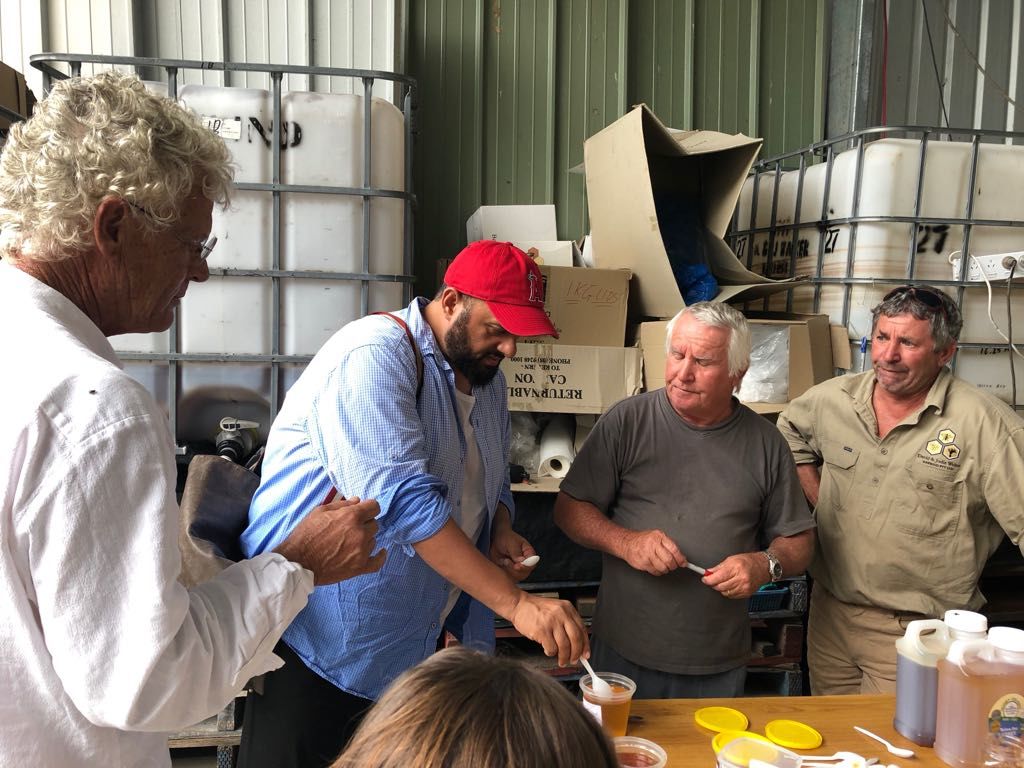
The Walker family, based at Inverell in northern New South Wales close to the Queensland border, have been in the beekeeping business since 1928. While on my travels through eastern Australia with the team from Gather By I had the pleasure to spend an afternoon with three generations of the Walkers – father Lennie, son David and grandson Nathan. It was Lennie’s father in-law Frank who got into bees all those years ago when we went to ‘bee school’ and then set up a shed to produce honey. Hard times meant he had to leave the land for a while, but was lured back in 1955 when he bought some hives. Lennie started working with Frank in 1963 when he was just 16 years old.
Lennie recently retired but still has a few hives to tend to, whilst David and Nathan continue on with the legacy and 3000 hives. They produce award-winning honey, collecting three gold medals at The Royal Sydney Easter Show in 2014, the only beekeepers in Australia to do so. Because of these awards (and many more) and the longevity of their business, they have become known as ‘beekeeper royalty’. It hasn’t gone to their heads though. I found the Walker family to be incredibly knowledgeable and modest with it. They clearly have a passion and love for the land and bees. Another title they have earned is ‘fence-post’ beekeepers which means they can produce amazing honey even when the forces of nature, such as droughts, are against them. With all this experience being handed down through the family they have developed an instinct for best practice. Their bees have survived harsh weather conditions, threat of disease and other natural hazards. The family have withstood the financial pressure of large conglomerates driving prices down. They have persevered when many Australian beekeepers haven’t.
I view honeys as having personalities and tasting them is a journey into exploring who they are. I try and understand the flavour profiles which can vary from intensely floral, citrussy, fruity, caramel and butterscotch. Some have exotic fruit flavours or bitter herbal notes with an astringent almost antiseptic taste. Some honeys can even remind me of the scents of animals or birds. It’s weird, but that exploration gives you a journey into the varying nectars that are collected from so many flowers, that when combined can create incredible flavours, smells and colours.
With the Walkers I tasted Red Stringybark, Yellow Box and Caley’s Ironbark. They are interesting names with Red Stringy Bark coming from the red gum eucalyptus tree and leading to a rich, dark, highly-medicinal honey. Yellow Box is a light golden-coloured honey from the eucalyptus melliodora which means ‘odour of honey’ because of the sweet aroma given off by the blossoms. It has a sweet taste with hints of butterscotch. Caley’s Ironbark is another eucalyptus endemic to eastern Australia. We are talking true bush honeys here and the taste profiles were amazing. Some of the single strains are rare and they hit you at the back of the throat and slowly infuse their flavour into your mouth.

The Walkers and Riath comparing the tastes of different bush honeys
I’m really grateful to the Walkers for sharing their story and for the great taste experience. I will definitely be going back for more. Why not try a tasting session at home and see how you get on picking out the personalities of a variety of honeys. Let me know how you get on.
Sign up for exclusive offers, recipes and the latest raw honey news.